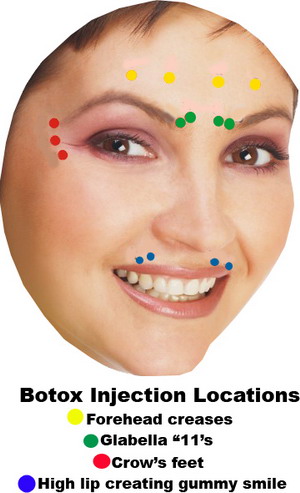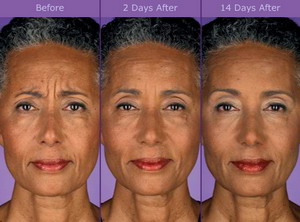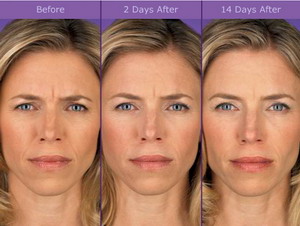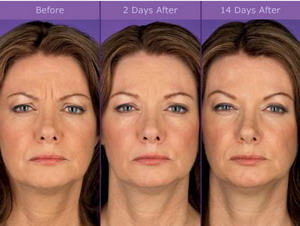|
|
|
|
|
| |
Quality general dental care with an emphasis on natural esthetics, form and function. Experience with complex restorative, prosthetic and implant treatment.
----------------------------------------------------------------------------------------
BOTOX:
Botox is a prescription medicine that is injected into muscles and used to improve the look of moderate-to-severe frown lines between the brows in people 18 to 65 years of age for a short period of time (temporary).
Botox is administered by a healthcare professional as a simple, nonsurgical treatment that is injected directly into the muscles between the brows. It works by blocking nerve impulses to the injected muscles. This reduces muscle activity that causes moderate to severe lines to form between the brows.
Botox, introduced in 2002, is a botulinum toxin approved by the FDA to temporarily treat moderate to severe glabellar lines between the brows and other similar treatments.
Botox injections have become a very popular cosmetic procedure in the United States. This wonder toxin can smooth those wrinkles on your forehead and around your eyes and face for up to six months. This includes erasing those pesky number “11’s” that appears in the glabella (the space between your eyebrows and above your nose), the creases across the forehead and the crow’s feet at the corners of our eyes.
Wrinkles are created when nerve cells within the muscles beneath the skin release acetylcholine, which in turn triggers a muscle contraction that creates wrinkles. Over the years this muscle activity causes wrinkles that we equate with aging. Botox acts by disrupting the release of this chemical, temporarily paralyzing the muscle. Wrinkle-busting results are visible within one week and remain for a minimum of three months and often may last as long as six months in most individuals.
Botox Cosmetic and similar treatments (ie. Dysport) are derived from the bacterium Clostridium botulinum. This is the very same bacterium that causes the deadly food poisoning known as botulism, but the cosmetic doses are much, much lower and the toxin is diluted.
There are several brands and types of botulinum-toxin-based injectables on the market today that have received FDA approval. Botox Cosmetic, Botox and Dysport are derived from botulinum toxin type A.

Botox has been approved for: (and dentists are using it for)
- forehead creases and bands on the neck
- moderate to severe frown lines between the eyebrows (glabellar lines).
- on crow's feet,
- relaxation of the upper lip to correct a gummy smile
Botox is also approved for: (administered by physicians for)
- Eyelid spasm (blepharospasm)
- Eye muscle spasm
- Severe neck muscle spasms (cervical dystonia)
- Excessive underarm sweating (severe primary axillary hyperhydrosis)
Botox is currently being studied as a possible treatment for:
- knee and hip osteoarthritis,
- temporomandibular joint (TMJ) disorder,
- migraine headache and
- benign prostatic hyperplasia (BPH).
Botox Injections: Do They Hurt?
The areas most commonly treated with Botox are the forehead, the glabella and the outer eye area. Botox is injected with a very fine needle into the muscle or muscles that are causing the wrinkle or furrow. Usually, you get several injections in each muscle. The whole process takes about 30 minutes and has minimal sensation associated with the injections.
There is no downtime after Botox injections. But it is recommended to minimize use of the treated area and to try to avoid moving the treated muscles for the first few hours.
Will I see immediate results after receiving Botox?
Patients will see some immediate changes but you will start to see the full results within one week (maybe sooner).
In subsequent months, as the effects start wearing off, you will notice a very gradual fading of the wrinkle-erasing effects. Typically, in most patients the effects last 5-6 months. With subsequent injections into the same areas the effects tend to last longer and some patients are able to go 8-9 months between Botox application is the areas being treated to maintain the effects.
Botox Risks
Botox is considered extremely safe, but it does have its share of risks.
They include:
- Bruising
- Redness or numbers at injection site
- headache
- nausea
- Flu_like symptoms
- Mild pain at the site
- Muscle weakness that limits facial movement
Botox: Black Box Warning
The U.S. Food and Drug Administration (FDA) now requires that Botox and similar products carry a black box warning about a rare but potentially life-threatening complication that may occur if the toxin spreads beyond the injection site. This is the strongest warning that can be issued by the FDA.
Importantly, none of these complications occurred among individuals using Botox for cosmetic reasons. Most of the hospitalizations and deaths were seen in children with cerebral palsy who were treated with botulinum toxin for muscle spasms. Some serious hospitalizations have been reported in adults treated with botulinum toxin for involuntary muscle movement and frequent neck spasms.
Botox Cost
The price for Botox injections is between $275 and $500 for one area (about 20 to 25 units for the glabella), between $425 and $600 for two areas and between $575 and $800 for three areas. The usual product charge is between $12 and $15 per unit used. Prices vary a great deal depending on the region and the doctor administering it.
Examples of Botox (Before and After)
(Courtesy of Allergan, Inc.)






Implant Cosmetic Dental Center™
----------------------------------------------------------------------------------------
Dr. Gregori M. Kurtzman is an international lecturer, selected as one of the top 100 dental speakers since 2006 by Dentistry Today, author of over 200 professional articles, a consultant to multiple dental manufacturers for product evaluation, development and research, he provides general dental care in suburban Maryland since 1986.
|
|
|
|
|
|
|
|
|